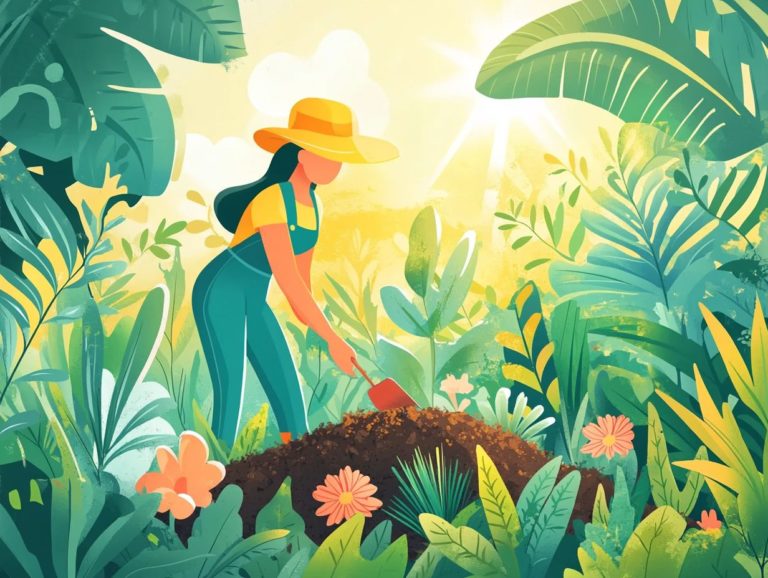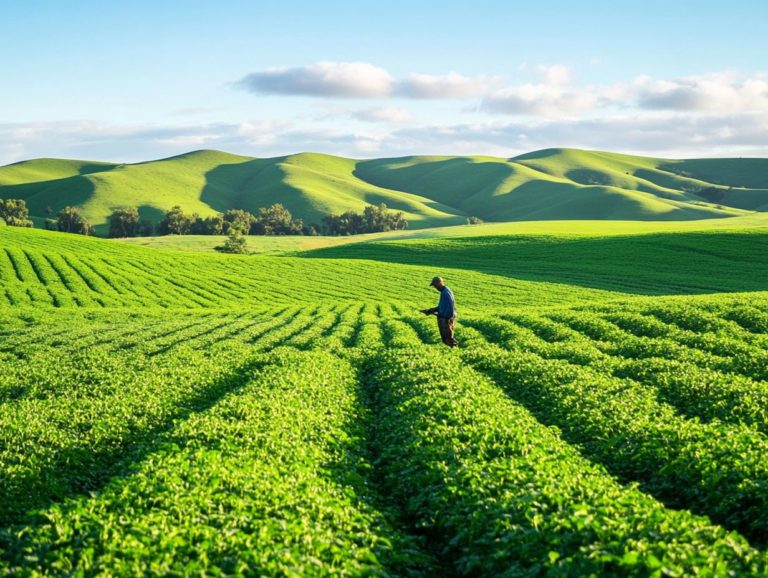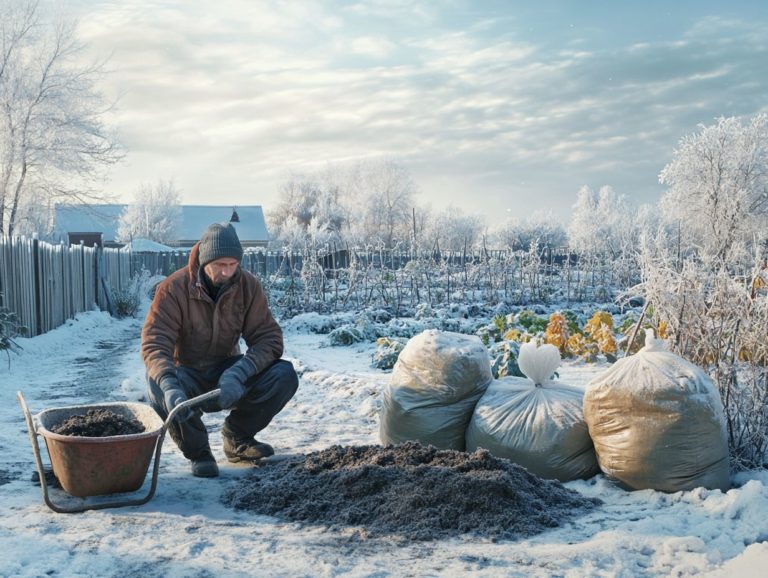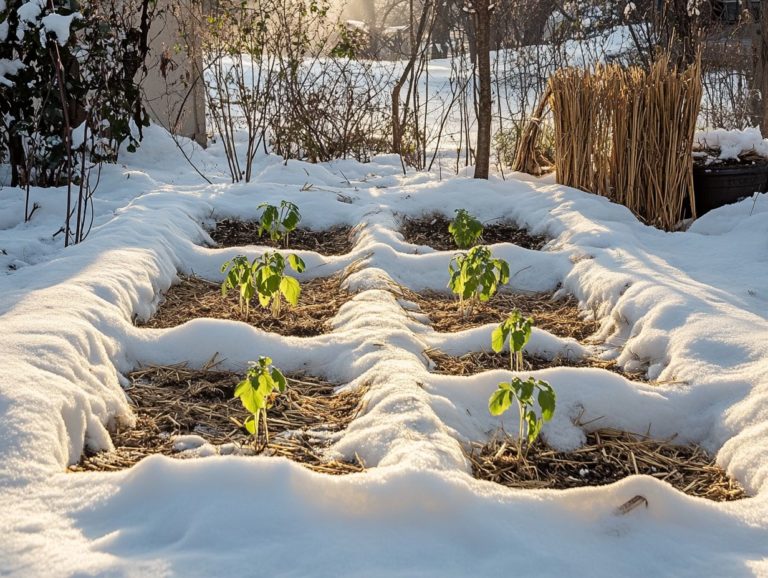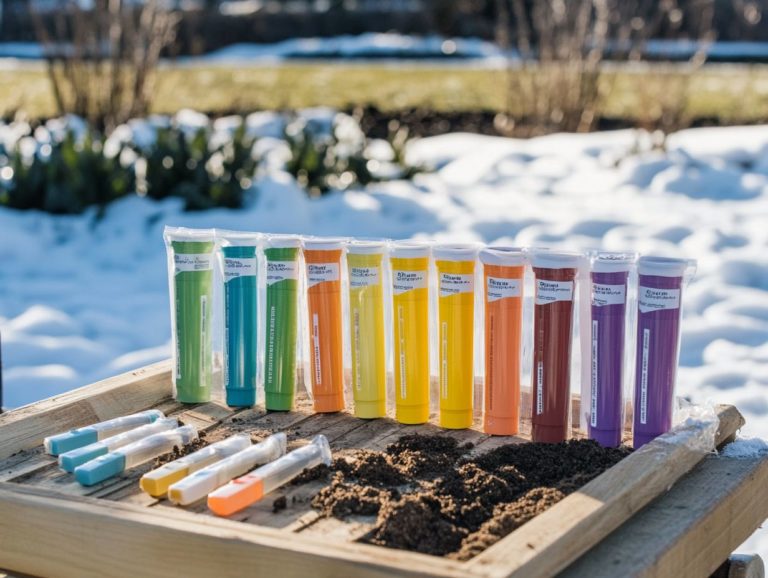How To Choose the Right Soil for Your Garden
Selecting the right soil for your garden is essential for nurturing healthy plants and creating a vibrant gardening landscape.
With an array of soil types at your disposal, each possessing distinct characteristics, understanding your choices is the foundational step for successful gardening.
This guide explores the various soil types, the factors that influence your choice such as climate, the specific needs of your plants, and the importance of soil testing, which measures nutrient levels and pH balance and underscores the significance of soil testing.
You’ll discover amendments that can improve soil quality and practical tips for maintaining its health, including using organic compost and proper watering techniques. Prepare yourself to cultivate a flourishing garden!
Contents
- Key Takeaways:
- Understanding Soil Types
- Factors to Consider When Choosing Soil
- Types of Soil Amendments
- Choosing the Right Soil for Your Garden
- Tips for Maintaining Healthy Soil
- Frequently Asked Questions
- What factors should I consider when choosing the right soil for my garden?
- What are the different types of soil that I can choose for my garden?
- How do I determine the pH level of my soil?
- What are some natural ways to improve the quality of my soil?
- Is it better to buy pre-mixed soil or make my own?
- How can I ensure that my garden soil is healthy and fertile?
Key Takeaways:
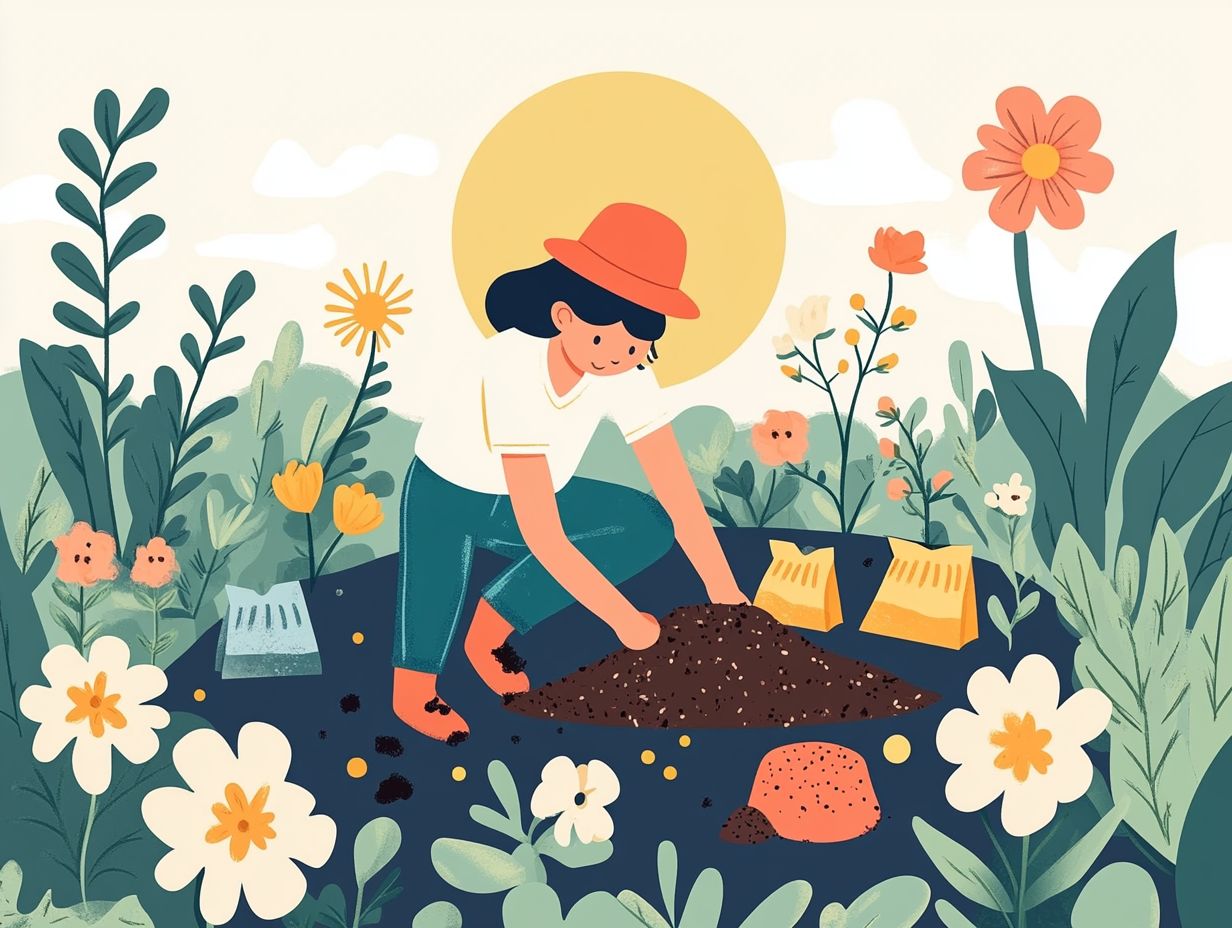
- Understand the different soil types and their characteristics to determine which type is best for your garden needs.
- Consider climate, plant needs, and soil testing for the best results!
- Account for budget and availability when choosing between organic and inorganic soil amendments. Maintain healthy soil through proper watering and fertilization techniques to promote rich root development.
Understanding Soil Types
Understanding soil types is essential for your gardening success, as each type boasts unique characteristics that influence plant growth and productivity, especially in various environmental conditions.
The four primary soil types loamy, clay, sandy, and silt each come with their own textures, drainage capabilities, and nutrient profiles that are vital for growing healthy flowers and vegetables.
Loamy soil is celebrated for its rich organic matter and moisture-retaining qualities. It serves as the perfect foundation for a variety of plants, from vibrant flowers to thriving vegetables. Conversely, sandy soil excels in drainage but often lacks essential nutrients. On the other hand, clay soil retains moisture well but can become compacted and is less permeable for root development.
Choosing the right soil type is crucial for fostering healthy root development and maximizing your gardening yield, especially for container gardening.
Different Types of Soil and Their Characteristics
Different types of soil come with their own unique characteristics that can greatly influence how well they support various plants, including flowers and vegetables. For example, loamy soil is a balanced mixture that retains moisture and nutrients, making it a gardener’s dream for growing a variety of plants.
Then there’s sandy soil, which drains quickly but demands a bit more attention when it comes to watering due to its tendency to dry out. Clay soil, while great at holding moisture, can become compacted, which isn t ideal for root development.
Silt soil finds a sweet spot, offering an excellent balance between moisture retention and drainage, making it perfect for a wide range of crops, especially vegetables and homemade gardening setups. Each soil type has its pros and cons; for instance, loamy soil s fertility is fantastic for a diverse array of plants, while sandy soil shines for drought-resistant species.
Clay’s heavy texture can benefit moisture-loving plants, but its density might create challenges for those that prefer well-aerated conditions.
By understanding these properties, you can make informed decisions about plant selection and cultivation techniques tailored to your specific soil type, enhancing your gardening experience.
Factors to Consider When Choosing Soil
When selecting soil for your garden, it’s essential to consider a few key factors that will pave the way for successful plant growth. For a comprehensive approach, check out how to create a soil care plan for your garden, which includes important aspects like moisture levels and texture.
You’ll want to take into account the local climate, the specific needs of the plants you wish to cultivate, and the availability of nutrients.
Assessing the climate in your area helps you identify the ideal soil type that suits your environment. Certain plants flourish under specific conditions like humidity and moisture levels, impacting the overall health of your garden. Understanding the nutrient content of your soil will significantly affect the health and productivity of your flowers, vegetables, or succulents.
Climate and Plant Needs
The climate in your region significantly influences the needs of your garden and guides your choices for soil types and amendments.
For example, if you reside in an arid area with scarce rainfall, you ll find that drought-resistant plants like succulents and cacti thrive, having evolved to conserve moisture efficiently. Conversely, if you re in a temperate zone that experiences distinct seasonal changes, you might gravitate toward perennials such as daylilies or peonies, which bloom beautifully during the warmer months.
Soil types also vary remarkably. Sandy soils along coastal regions provide excellent drainage, while clay-rich soils in wetter climates can retain too much moisture for certain species, affecting the growth of both flowers and vegetables. Understanding these local climatic nuances can help you cultivate a vibrant landscape uniquely suited to your environment.
Soil Testing and Analysis
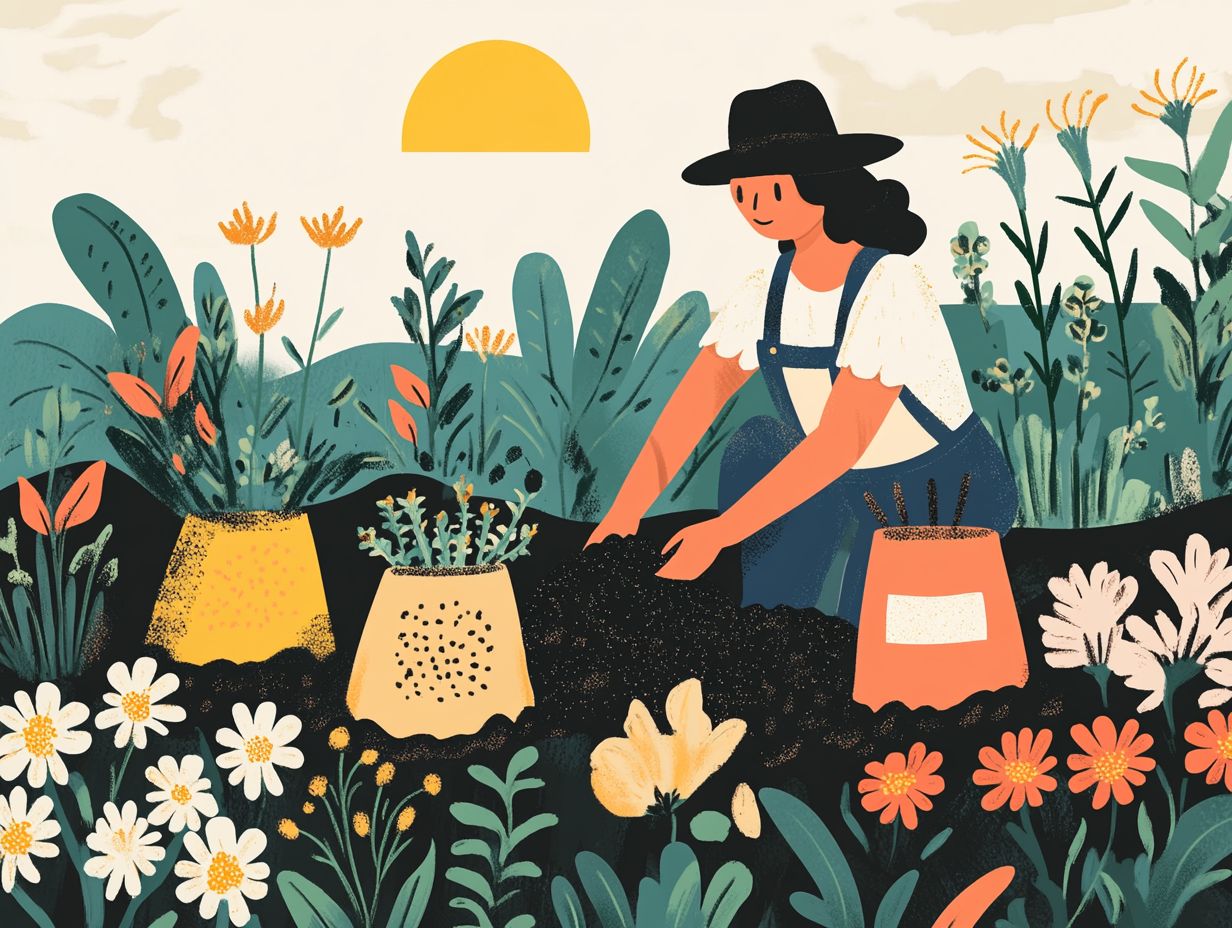
Soil testing is an essential step in your gardening journey. It helps you determine the pH and nutrient content of your soil, ensuring a successful planting season. This knowledge enables you to make informed amendments for optimal plant growth and healthy soil development.
By analyzing soil composition, you can pinpoint deficiencies or excesses in vital nutrients like phosphorus or organic matter, which directly impact your plants’ health and growth. The process begins with collecting soil samples from various spots in your garden, which you then send off to a lab for detailed analysis.
The results will provide you with crucial insights into nutrient availability, soil texture, and organic content, enabling you to make targeted adjustments. For instance, understanding your soil’s pH level can guide you in deciding whether to add lime to raise acidity or sulfur to lower it, which is especially important in agricultural settings.
Understanding these characteristics leads to healthier, thriving plants, including your flowers and vegetables. It also boosts your crop yields and enhances your garden s overall sustainability. Don t wait to test your soil! It s essential for a successful planting season.
Types of Soil Amendments
Different types of soil amendments can profoundly elevate soil quality and boost the growth potential of your plants, including both organic and inorganic options. Organic amendments, like compost and well-rotted manure, enrich the soil with vital nutrients and foster a thriving community of beneficial organisms such as earthworms.
Inorganic amendments serve to rectify nutrient deficiencies and enhance soil structure. Understanding the appropriate amendment to apply, guided by soil testing, can transform your gardening experience and yield remarkable results, especially for nurturing healthy soil.
Organic and Inorganic Amendments
Organic amendments, such as compost and compostable materials, work wonders for your soil by enhancing its structure and infusing it with essential nutrients. Meanwhile, inorganic amendments target specific nutrient needs, allowing you to fine-tune your garden s requirements for optimal moisture retention.
Understanding the distinctions between these two categories of soil amendments is vital for you, whether you re a gardener or a farmer, as it impacts your gardening success. Organic amendments enrich your soil with beneficial microorganisms and improve moisture retention in containers, meaning you’ll spend less time watering.
On the flip side, inorganic amendments provide a rapid fix for any immediate nutrient deficiencies, which is especially beneficial in highly managed agricultural settings. Both options are crucial for fostering sustainable soil health.
By utilizing organic materials like green manure and integrating inorganic fertilizers such as nitrogen or phosphorus, you can create a harmonious approach that supports plant growth and maximizes your yields, ensuring a rich gardening experience.
Choosing the Right Soil for Your Garden
Selecting the ideal soil for your garden requires a thoughtful alignment of soil types with the specific needs of your plants. To enhance your choices, refer to this guide on how to select the right soil amendments, and consider factors such as budget, availability, and environmental impact.
Different plants thrive in distinct soil environments. Grasping these requirements will enable you to choose a blend that provides optimal drainage, nutrient richness, and moisture retention, which is essential for healthy plants.
Staying within your budget helps you build a flourishing garden without overspending on specialized soils or amendments.
Matching Soil Type to Plant Needs
Matching the soil type to the specific needs of your plants is essential for growing a successful garden, particularly for your flowers and vegetables. For instance, loamy soil, which has a balanced texture and is rich in nutrients, serves a variety of plants exceptionally well. In contrast, clay soil can be a haven for moisture-loving species.
By understanding the requirements of your flowers, vegetables, and succulents, you pave the way for better gardening outcomes. Imagine your garden bursting with color and life!
Different soil types support a range of root structures and growth habits. Sandy soil, known for its quick drainage, is ideal for plants such as lavender and rosemary, which thrive in drier conditions and are perfect for container gardening.
On the flip side, peat moss, celebrated for its high organic content, provides an excellent environment for acid-loving plants like azaleas and blueberries, promoting their growth through rich organic matter.
Then there s chalky soil, which is often alkaline, meaning it has a high pH and can affect plant growth. This type of soil favors plants like hollyhocks and various wildflower species, making it important to consider when planning your garden.
By recognizing these intricate relationships between soil types and plant preferences, you can create a flourishing ecosystem that enhances the beauty of your space and contributes positively to the environment.
Considering Budget and Availability
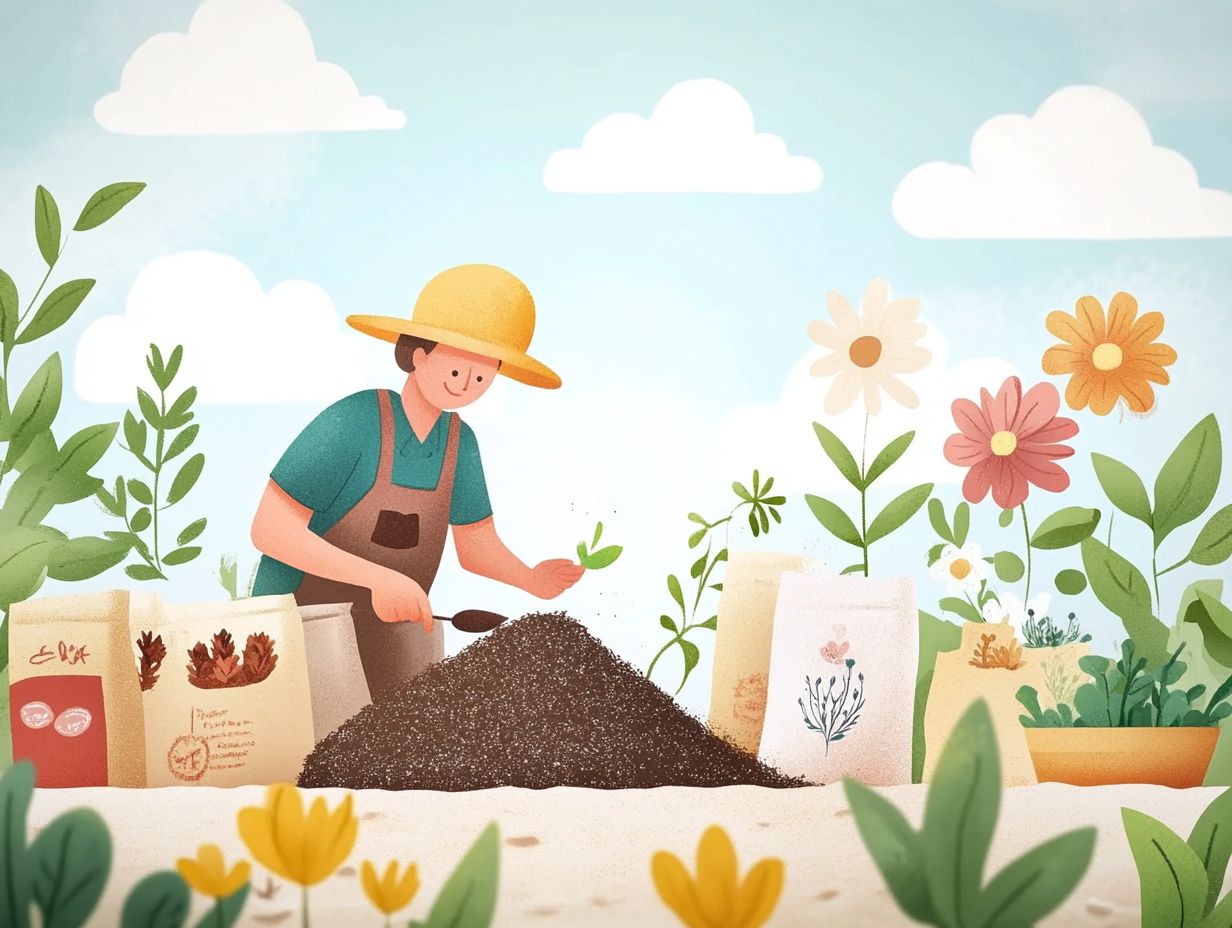
When selecting soil for your garden, it s essential to consider both your budget and availability. High-quality organic soils can offer numerous benefits, but they often come with a premium price tag.
Take the time to evaluate local options, whether it s homemade compost or commercial mixtures, to find the best soil for your gardening needs without straining your wallet.
Explore local nurseries or garden centers for affordable and region-specific selections that you might not discover online. Don t hesitate to tap into community resources like gardening clubs and local farmers, who may be willing to share or sell their excess soil or compost at a reasonable price.
Consider bulk purchase options as well this strategy can lead to significant savings in the long run. Finally, understanding the nutrient requirements of the plants you plan to grow will guide your soil selection process, ultimately resulting in a more successful and cost-effective gardening experience.
Tips for Maintaining Healthy Soil
Maintaining healthy soil is essential for nurturing plant growth and ensuring a flourishing garden. Here are several key tips to help you achieve this goal.
Regularly incorporating organic matter, like compost, enhances soil structure. At the same time, employing the right watering and fertilization techniques supports nutrient availability and moisture retention.
By prioritizing these practices, you can create an environment that fosters robust root development and vibrant, thriving plants.
Don t miss out on the best soil for your plants start your search today!
Proper Watering and Fertilization Techniques
Proper watering and fertilization techniques are vital for healthy soil. Understanding the moisture needs of various plants will help you implement effective practices.
For instance, some plants prefer a dry spell between watering sessions, while others thrive in consistently moist conditions. Choosing the right type of fertilizer is equally crucial. Organic options often provide slow-release nutrients that align with the natural growing cycle.
Timing is also key. Early morning is generally the best time for watering, allowing for evaporation later in the day. Be mindful of common mistakes to avoid, such as using too much fertilizer, which can scorch plant roots, and underestimating the importance of condition of the soil, as compacted soil can hinder water absorption.
By employing these strategies, you can cultivate a thriving garden ecosystem.
Frequently Asked Questions
What factors should I consider when choosing the right soil for my garden?
When choosing the right soil for your garden, consider the type of plants you will be growing, the climate in your area, and the drainage and nutrient needs of your plants. For more detailed guidance, check out this resource on how to select the right soil for cold gardens.
What are the different types of soil that I can choose for my garden?
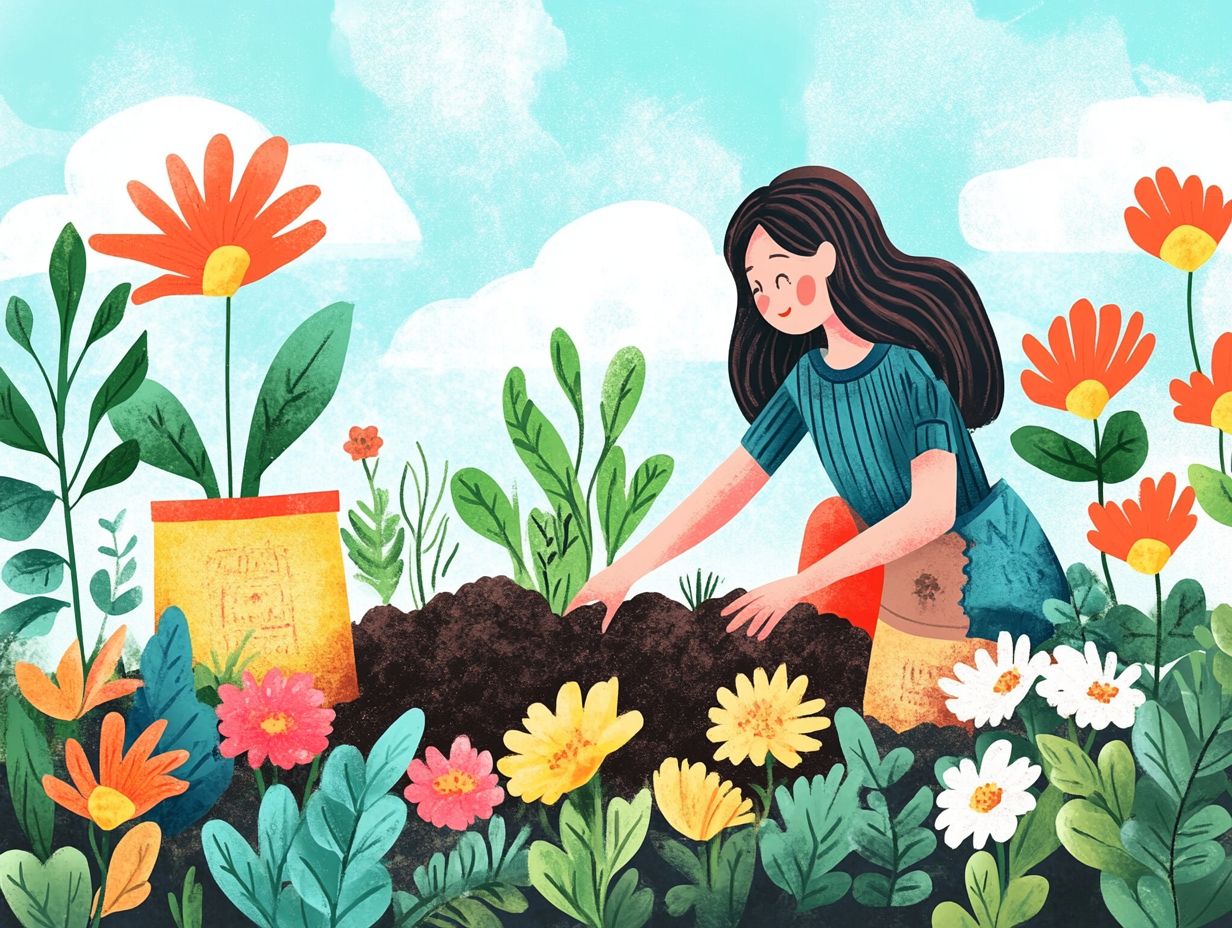
The three main types of soil are sandy, clay, and loamy. Sandy soil drains well but lacks nutrients. Clay soil is heavy and dense but can hold nutrients well. Loamy soil is a balance of both and is considered ideal for most plants.
How do I determine the pH level of my soil?
You can determine the pH level, which indicates how acidic or alkaline your soil is, by using a pH testing kit or by sending a sample to a soil testing lab. The ideal pH level for most plants is around 6.5.
What are some natural ways to improve the quality of my soil?
You can improve soil quality by adding organic matter, such as compost or manure, to increase nutrient levels and improve drainage. Using cover crops also helps add nutrients and improve soil structure.
Is it better to buy pre-mixed soil or make my own?
It ultimately depends on your specific gardening needs and budget. Pre-mixed soil can be convenient, but making your own allows you to customize the soil to fit your plants’ specific needs.
How can I ensure that my garden soil is healthy and fertile?
Make your garden thrive by ensuring your soil is healthy and fertile! Regularly test the soil, amend it with organic matter, rotate crops to avoid depleting nutrients, and practice proper watering and fertilizing techniques.
Join the community of gardeners who are thriving! Start your gardening journey today!

